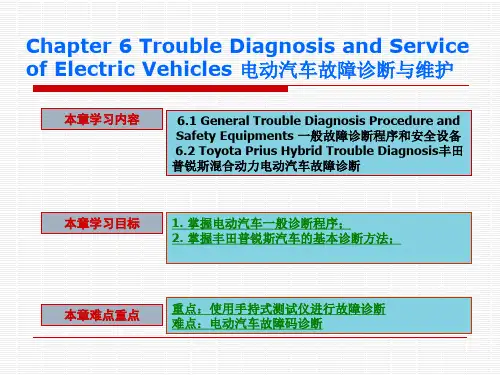新能源汽车专业英语最新版精品课件第6章第1节
- 格式:ppt
- 大小:1.25 MB
- 文档页数:27

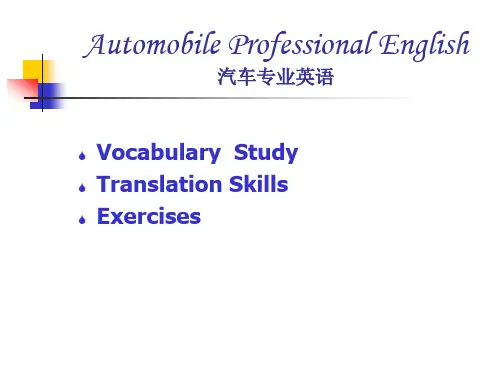
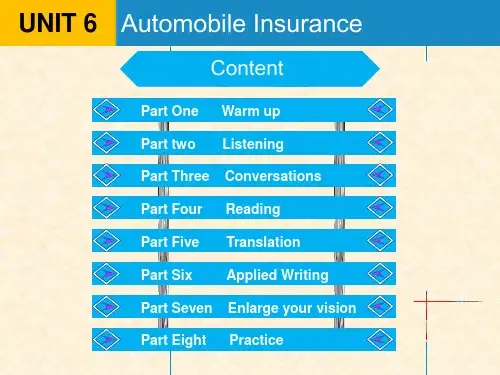
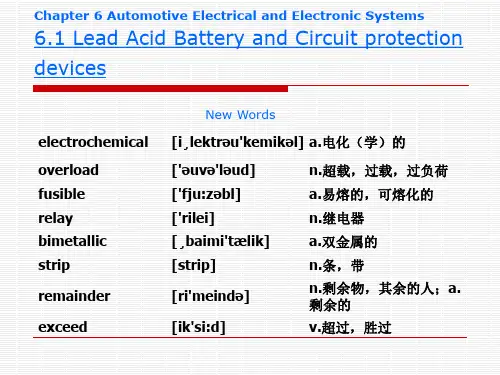

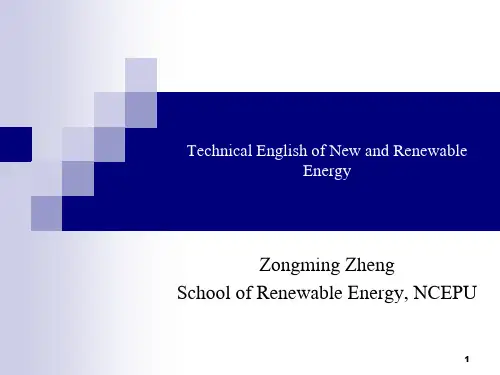
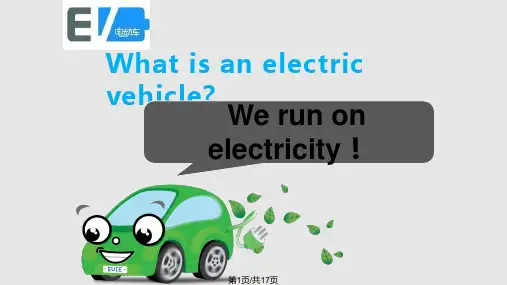
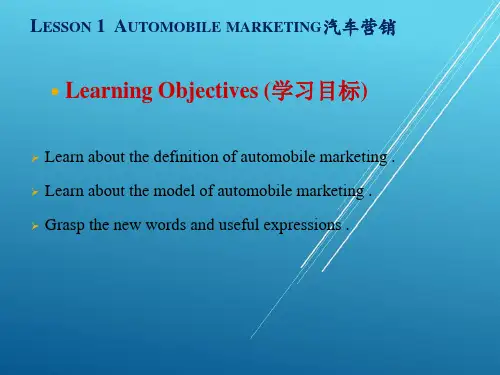
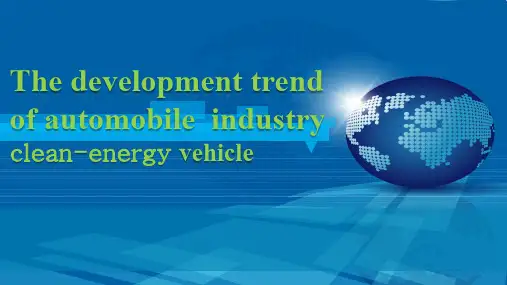
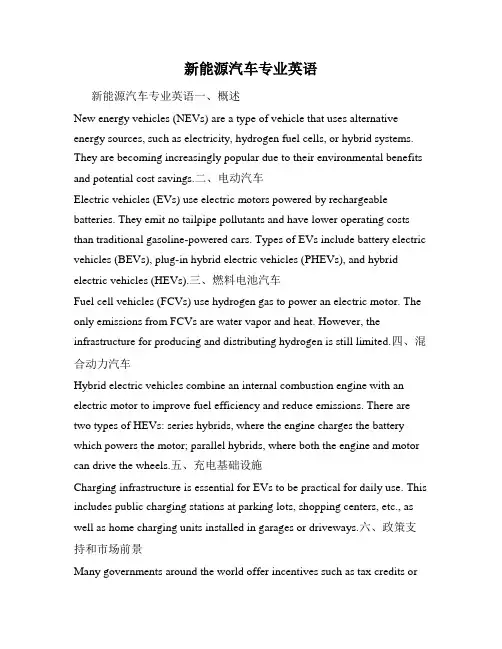
新能源汽车专业英语新能源汽车专业英语一、概述New energy vehicles (NEVs) are a type of vehicle that uses alternative energy sources, such as electricity, hydrogen fuel cells, or hybrid systems. They are becoming increasingly popular due to their environmental benefits and potential cost savings.二、电动汽车Electric vehicles (EVs) use electric motors powered by rechargeable batteries. They emit no tailpipe pollutants and have lower operating costs than traditional gasoline-powered cars. Types of EVs include battery electric vehicles (BEVs), plug-in hybrid electric vehicles (PHEVs), and hybrid electric vehicles (HEVs).三、燃料电池汽车Fuel cell vehicles (FCVs) use hydrogen gas to power an electric motor. The only emissions from FCVs are water vapor and heat. However, the infrastructure for producing and distributing hydrogen is still limited.四、混合动力汽车Hybrid electric vehicles combine an internal combustion engine with an electric motor to improve fuel efficiency and reduce emissions. There are two types of HEVs: series hybrids, where the engine charges the battery which powers the motor; parallel hybrids, where both the engine and motor can drive the wheels.五、充电基础设施Charging infrastructure is essential for EVs to be practical for daily use. This includes public charging stations at parking lots, shopping centers, etc., as well as home charging units installed in garages or driveways.六、政策支持和市场前景Many governments around the world offer incentives such as tax credits orrebates for purchasing NEVs in order to promote their adoption. The market outlook for NEVs is positive due to increasing concerns about climate change and air pollution, as well as advancements in technology making them more affordable and practical for consumers.七、未来发展趋势The future development trend of NEV industry will focus on improving battery technology to increase range while reducing costs; expanding charging infrastructure; developing new materials that can make lighter weight cars with longer ranges; exploring new business models such as car sharing services using NEV fleets; integrating smart technologies into NEV systems like autonomous driving features etc..。
